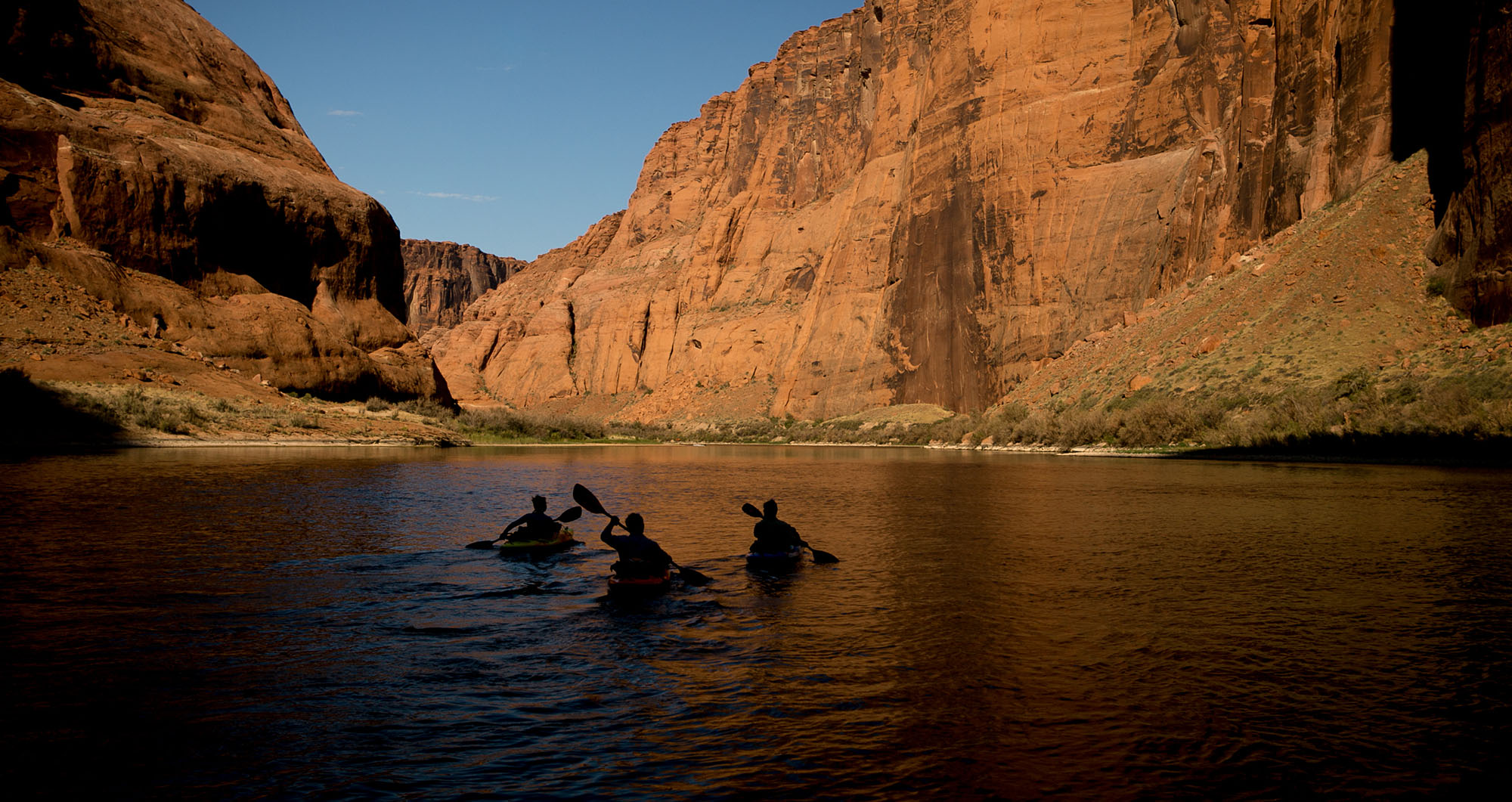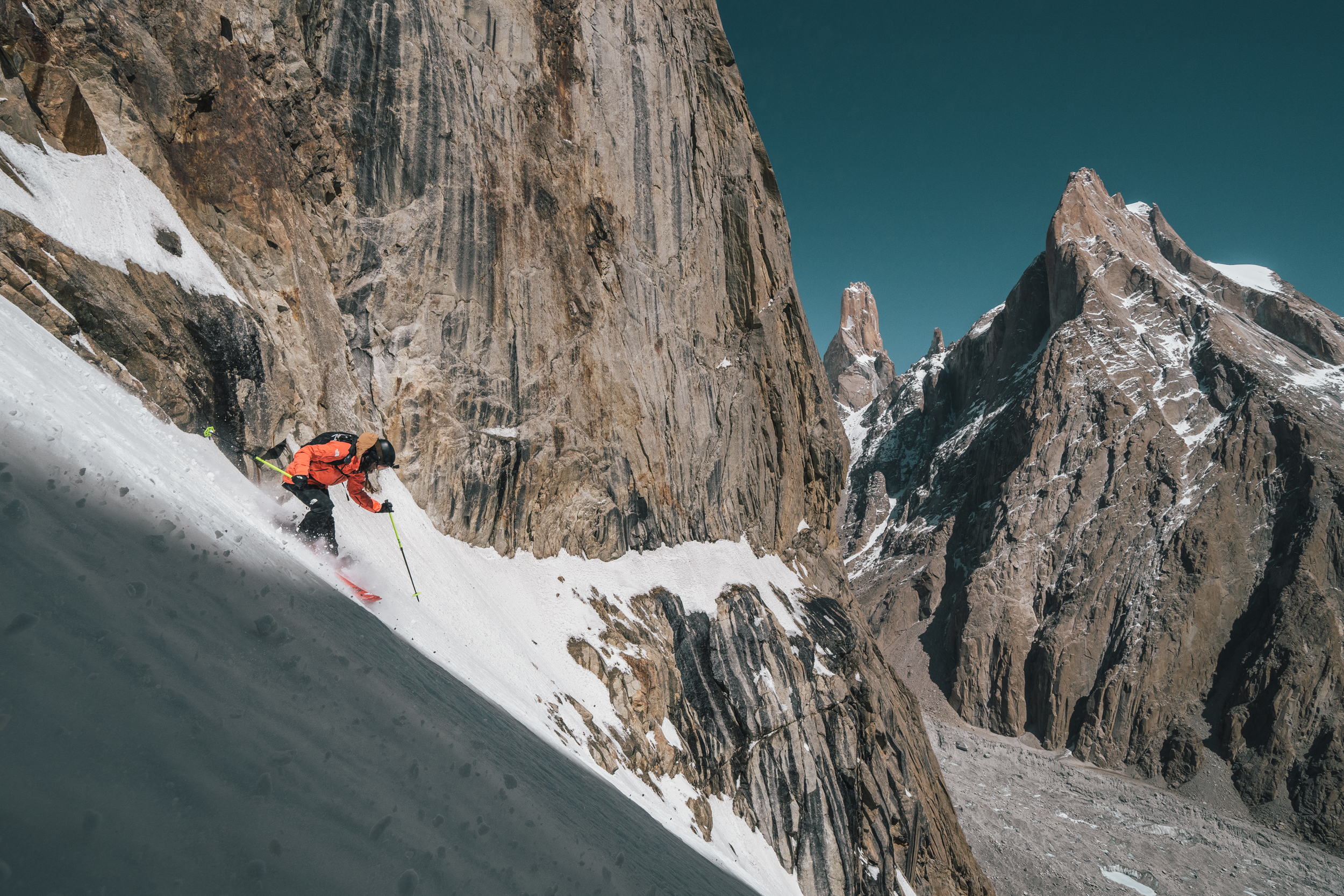
Mountainfilm on Tour Explores Alaska
Last month, we sent Ashley Boling, one of Mountainfilm on Tour’s presenters to Alaska for 20 days. He regaled us with the following adventures, musings and observations from The Last Frontier, which include glacier viewing, rain, a malfunctioning Chevy Blazer, more rain, an eagle sighting, skiing in the rain and nine Mountainfilm on Tour shows.
Anchorage, Alaska: 01-10-14
The Tour stops consist of Anchorage, Juneau, Girdwood and Homer. I presented my first show last night, on the campus of the University of Alaska, Anchorage. The 460 people in the audience loved the show and demonstrated their appreciation with wild applause after each of the 10 films. I would have to say the favorite film of the evening, judging by the uproarious applause and laughter, was The Scared is Scared. This film has no skiing, climbing, extreme kayaking or outdoor adventure; it is an imaginary story told by a young child with an active and innocent mind.
Having arrived safely and on time at the Anchorage International Airport, I made my way through the dark, wintery streets of Anchorage and arrived at the cozy home of Carolyn Muegge-Vaughan. Carolyn is an Alaskan legend in her own rite and was married to the great explorer, musher and adventurist Norman Dane Vaughan. Norman dropped out of Harvard and accompanied Richard E. Byrd to the South Pole in 1928. Norman competed six times in the 1,049-mile Iditarod dog sled race. Norman was born in 1905, lived to be 100 years old, passed away in Anchorage in 2005, and his legacy lives on throughout Alaska and points far and wide. Norman lived every day by his motto: "Dream big and dare to fail."
Juneau, Alaska: Dateline: 01-14-14
After completing two Anchorage Mountainfilm on Tour film presentations, I left the cold, dark environment and flew to the much smaller capital of Juneau. Anchorage is the largest city in the state with a population of about 300,000. Juneau has maybe 30,000 residents — the city on the sea has a much different feel.
Juneau is in southeast Alaska, and it is temperate rain forest. The massive Sitka spruce and hemlock trees are impressive. People in Juneau have their backs to the mountains and look out to the ocean. Because of this narrow strip of flat land between mountains, glaciers and the Pacific Ocean, there are no roads to connect Juneau to the mainland of North America. We are somewhat isolated here.
The people of Juneau are quirky and warm. Mark Ridgway, owner of the Gold Town Nickelodeon theater, picked me up at the airport yesterday afternoon. He had to leave his camouflaged, early 1980s, diesel Chevy Blazer running because the battery wouldn’t restart following a shutdown of the engine. Mark had a plug of chewing tobacco in his lower lip and was wearing a Colorado love Mountainfilm truckers hat.
Mark drove me to his lovely home, where I dropped off my bag, grabbed the films and player and then we tightened the alternator belt on the Chevy. It was raining the entire time. The fix seemed to work, and I’m now piloting the Chevy from Mark and his wife Heather's home to the theater for the next few days. I feel like I fit into Juneau while I’m behind the wheel of the vehicle. The Chevy also has a malfunctioning power steering box, so it takes great effort to turn the wheel while driving and, especially, parking the thing.
The films last night were well received by the almost-full house. I would say the best-liked film was Nord for Sola. People here really identified with the Norwegian film about two young men who build a shelter with found materials on a secluded beach north of the Arctic Circle and spend a dark, cold winter surfing the Atlantic waves. It takes some determination to make that happen, and it takes the same type of determination to live in Alaska, where they say that there is no bad weather, just not the right clothing.
Juneau is a culmination of people who have landed here for fishing, skiing, outdoor pursuits, drinking and because they want to be here. It precipitates 300 days a year and is cloudy most of the time. Sometimes the snow level is just up the mountains, like today, and it rains and rains downtown. Sometimes the temperature drops just enough to allow snow to accumulate down at the ocean.
I drove north of downtown Juneau on Wednesday. The single highway runs along the ocean for approximately 25 miles north/south before it stops in both directions. There is no road east because of the vast mountains. No road west because of the ocean. And you can't drive much north or south because of glaciers. I drove north along the scenic coast to Auke Bay, where I stopped at the small post office to purchase stamps. As always, it was pouring rain. The camouflaged Chevy Blazer would not start. I tried and tried to get it started, but it would not. The two massive batteries were out of power. I found a portable power station in the back of the Chevy and hooked up the cables. It sounded stronger, but still no start. I called Mark Ridgway, my Juneau host and owner of the Chevy, to report my stranded condition and location. Mark said he would drive to me and jump the vehicle, but maybe I could find a person in the wet parking lot to do the same. I attempted one more start, after an hour of being immobile, and the Chevy fired up reluctantly.
Mendenhall Glacier is 6 miles north of Juneau, so I drove to see the sight. It continued to pour on the already-water-logged snow and ice on the ground. I found the Mendenhall Glacier parking area and got out to take some photos and see this huge chunk of blue ice. I was blown away. The glacier is large enough to fill a valley and maybe 500 feet tall as the ice meets the glacial melt lake before the resulting river carries the fresh water to the sea. I spent 45 minutes there and then found the Chevy batteries again too low to restart the vehicle. I flagged down a nice local in the small parking area, and he jumped my war wagon with his newer Ford pick up. I was back on the rainy road, south to Juneau.
Juneau has a ski area called Eaglecrest, and I wanted to try skiing there. The area is across the bridge, over the Gastinneau Strait, on Douglas Island. On Thursday, I suited up in my ski togs and headed through the pouring rain to Eaglecrest. At the high point of the bridge over to Douglas Island, I spied a mature bald eagle hovering in one motionless spot about 30 feet above the Blazer. The wind was howling from the south, and the eagle was surfing the strong wind. I had a great vantage point below the large bird — until a cloud blew in and obscured my view.
I should have known something was up when I arrived in the parking lot at Eaglecrest to find only six vehicles. Four of these had people outside, loading equipment, and drivers were taking off their ski boots. I parked the war wagon and walked through the Stanley Cup-style parking surface to the lodge. It was still pouring rain.
The winds were so strong that the upper lift was closed. Two lifts were running, and one was for the beginner area. I rented skis, boots and poles. The ticket office woman, Megan, had seen the Mountainfilm show the night before and greeted me by name when I inquired about a lift ticket. She apologized for the rainy, windy conditions of her ski area and gave me a heavily discounted lift ticket for the lower mountain.
I skied — if you can call it that. I liken the experience to putting on my ski clothing, standing in the shower and turning the water on to a temperature of 41 degrees. I lasted for two hours before I decided to call it quits. I counted a total of 13 people out that day on the one lift and the several runs that were open. Each time I boarded the one lift to ride back up the mountain, the soggy lift operator asked me if I were still at it. He seemed surprised that anyone was braving the wet, windy, cloudy conditions. I was. I did. And I survived what has to be one of the more interesting and bizarre ski days of my 38-year downhill skiing career. Alaska is full of new experiences.
—Ashley Boling



